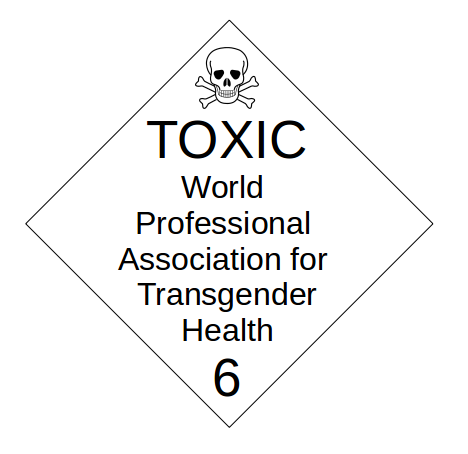On Refusing to Believe Women Raped in Psychiatric Wards
Too often, psychiatric hospital staff punishes women for reporting they were raped while in care.

Content warning: article contains descriptions of sexual violence
Twenty five years ago, I was asked to testify in a Nebraska case on behalf of female psychiatric patients who had been repeatedly raped in hospital—and then horribly punished for “telling.”
I flew out to Omaha and then drove for nearly six hours to the hospital which was located in a remote region of the state. It was like visiting the ward in Ken Kesey’s “One Flew Over the Cuckoo’s Nest.” But oh, the women were so sweet, so credible, so grateful, both for being listened to and for being believed. The state settled before I could testify. I have never forgotten their stories or the issues they raised.
Today, men everywhere continue to rape women at home, on the streets, in brothels, and in presumably closed, “safe” spaces. Transwomen who remain genitally and psychologically male, do so as well. 4W has been covering this in terms of the way women-only jails in the United States and hospitals in the UK have been infiltrated by transwomen who are sexually assaulting female prisoners and patients.
Here is an edited version of the piece I wrote so long ago, in 1997, and titled “No Safe Places.” It appeared in a small but excellent feminist magazine On The Issues. Alas, it remains timely.
After a devastating car accident that left her permanently bedridden and in need of around-the-clock care, “Andrea” became a long-term patient at the Laurelwood Convalescent Hospital in North Hollywood, California. Paralyzed, unable to speak, eat, or control her bowels or bladder, she also lost the ability to summon help when she needed it. But she could still smile, and register pain and discomfort. In 1982, her family was unable to understand why Andrea suddenly became very restless, whimpered a lot and cried more. But then they also hadn't understood why, against their wishes, Andrea had recently been moved to an isolated room where she was attended only by male aides.
Then Andrea missed two periods, at which point it was discovered that this totally incapacitated woman, a patient in a state convalescent home, was pregnant. Finally, the staff understood why Andrea's feeding tube had been mysteriously disrupted several times. Andrea's family sued and won a $7.5 million jury award. But in 1993, an appeals court ruled that the "failure for the facility to provide security" did not constitute "professional negligence." In doing so, the court reversed the original verdict, sent the case back to the trial court, and ordered that "each party bear its own costs on appeal." Eventually, the case was settled out of court for less than a million dollars. One can only ask: Just what would constitute "professional negligence?"
Clearly, Andrea did not—and could not—consent to sexual intercourse. Totally disabled and trapped in her own body, she was raped in a convalescent home charged with her care. Are crimes not prosecuted when they occur on state property? Or when the criminal is acting on behalf of the state? Is the state above the law?
In the early 1990s, in Pendleton, Oregon, a male aide on the female psychiatric ward sexually assaulted women—but when they alleged that they’d been harassed, fondled, or penetrated, an in-house committee found “no evidence to substantiate the charge.” Eventually, when five female patients made the same allegations, the male aide was dismissed.
”High-functioning, exploitative males were placed in the patient population with highly vulnerable females.”
One might very well conclude that a woman—especially a psychiatric patient—will not be believed unless at least four other women independently claim that they too have been sexually assaulted by the same man; at least two treating psychologists find their allegations "credible;” and the institution officially documents the allegations and does not misplace or destroy the records.
If so, this bodes well for an upcoming class action suit which has been brought in federal court against the highest ranking officials of Nebraska's Department of Public Institutions. The four named female plaintiffs range in age from 19 to 62 years, and are mentally ill and/or developmentally disabled. This in itself is surprising, because once someone is labeled "mentally ill," whatever she says will either be used against her, or will not be believed.
From July 1991 through July 1994, the five women stated they were repeatedly and savagely gang-raped by the same three male psychiatric inmates at the Hastings Regional Center (HRC) in Hastings, Nebraska. They were also beaten, kicked, bruised and further threatened by their rapists. The rapes were reported immediately, consistently, and repeatedly by the victims and by other patients. The staff kept a record; they also discussed the attacks with one another. Despite all this, the women received treatment only for their physical injuries, and their attackers went unpunished.
Incredibly, the staff instead disciplined the women for reporting and protesting their rapes! The victims—not their attackers—were put on ward restriction (no group activities, no outdoor walks) ostensibly "for their own safety," placed in isolation rooms, and often tied down, both hand and foot, in leather restraints, for days at a time. In effect, they were tortured for having been gang-raped. Tied down, restrained, isolated, these women experienced terrifying flashbacks of earlier abuse, which may have contributed to their mental illness in the first place.
"High-functioning, exploitative males were placed in the patient population with highly vulnerable females," charges Omaha attorney Bruce Mason, who filed the suit along with Shirley Mora James and Tania Diaz, both attorneys with Nebraska Advocacy Services. The suit alleges that many staff members were "deliberately indifferent" in allowing the "pattern of rapes and sexual exploitation to continue," particularly for women who had been sexually assaulted as children or in their earlier lives. The attorneys say that by allowing the attacks to continue, employees created an "inherently dangerous" environment for the women.
“Sarah” had been a severely abused child, whose parents committed her as a teenager after she'd tried to run away. Her relatives rarely visited her, but when Sarah turned 21, they allowed physicians to perform a lobotomy. After having her brain mutilated, she was heavily— and perhaps wrongfully—medicated for more than 25 years. In our interview, this sweet-tempered woman described her rapes as "bad things like in a bad dream in which bad boys hurt me and raped me. It was like torture." In what sense can a lobotomized and heavily medicated female captive agree to consensual sex or effectively resist rape? Or, afterward, be believed as a credible witness?
Sarah is the one who led me to the underground tunnels where the rapes took place. She also asked me whether I’d take her to the State Fair. I hugged her and said I surely would.
“Ellie” is mentally retarded. She also suffered from post-traumatic stress disorder due to a childhood history of sexual and physical violence. After she reported being raped for the first time, she recalls that staff members "tackled me to the floor, put me in a straitjacket. I would scream. They would mock me, which made me angry. Every time while I was straitjacketed that I tried to talk about my feelings they'd just ignore me." "The staff didn't try to help me at all. If they would have just listened to me instead of ridiculing me it would have calmed me down. No one had any sympathy for me. They treated me like an animal, a crazy lady."
”Once someone is labeled 'mentally ill,' whatever she says will either be used against her, or will not be believed.”
After being raped repeatedly, “Martha” finally "tried to run away from that place. When they found me, they didn't ask what problems I was having or anything. They just put me in a straitjacket."
“Patti” describes the attacks as feeling like "just another situation with my dad. In the sixth grade I told a counselor that my dad was abusing me and my mother blamed me for lying." This woman continues to have nightmares about her father and has had similar nightmares about the men who raped her while she was psychiatrically incarcerated.
As a child, “Dana” had been horrendously abused by her mother, her father, and other male and female relatives, both sexually and physically. While institutionalized, she was raped and gang-raped by male psychiatric inmates. Unable to find anyone who would believe her reports, she became depressed and tried to cut herself with a pen-knife. She recalls being "tackled by staff members and put in restraints," which made her feel utterly "defeated." She explained that being tied in leather restraints by staff "reminded her of when her mom held her down for her dad to assault."
These Nebraska women, extremely courageous to pursue legal vindication under the circumstances, are asking for monetary damages and demanding structural changes in the way HRC operates.
Male psychiatric patients are not safe either. For example, one highly intelligent, but chronically schizophrenic man, who was hospitalized long-term in a Georgia facility, was anally raped so many times by male aides that he finally asked his family if he was a man or a woman.
Over the years, I have interviewed many psychiatric patients who have reported being raped in facilities across this country, both by staff and by other inmates. Women's physical injuries were sometimes so severe they required hospital treatment—but despite this, employees rarely filed police reports, and almost never restricted the rapists to their wards or transferred them to institutions for the criminally insane. No action was taken by the authorities. In fact, employees often concluded that whatever had happened, if anything, was probably "consensual sex," and that the women had "wanted" it.
Imagine if you had to continue living in the same small, controlled space as your rapist, in constant fear of future assaults. What if this had already happened to you before, perhaps in your own family? What if this had driven you over the edge in the first place, and you'd landed in the nearest state institution to regain some peace of mind, presumably safe from such lawlessness?
Despite the feminist documentation of what rape is and what it does, mental health professionals, especially those who work on state wards and are both overworked and underpaid, do not seem to know anything about this.
”Male psychiatric patients are not safe either.”
Society has an obligation to keep criminals in jail, not to release them into the "therapeutic" culture. What we need are longer sentences upfront, not institutionalization—especially since the mandatory treatment of sex offenders rarely works. Legislators have long fancied themselves gynecologists in the matter of abortion; now, judges have deemed themselves psychiatrists. Sex offenders are no longer merely criminals. By judicial diagnosis, they are "mentally abnormal," have "personality disorders," and/or are likely to engage in future acts of a sexually predatory nature.
On June 23, 1997, in Kansas v. Leroy Hendricks, the U.S. Supreme Court upheld the 1994 Kansas Sexually Violent Predator Act that allows the state to commit a sex offender to a mental asylum—perhaps indefinitely—until he can show that he is no longer "dangerous" or subject to "irresistible impulses."
The defendant, 62-year-old Leroy Hendricks, admits that when he gets "stressed out," he "can't control the urge" to molest. Ironically, Justice Clarence Thomas upheld the involuntary, civil commitment of sexual predators. His decision stresses that such civil commitment is meant to provide treatment rather than punishment, and that "the conditions surrounding confinement do not suggest a punitive purpose...such restraint of the dangerously mentally ill has been historically regarded as a legitimate nonpunitive objective."
Don't get me wrong. I'm still in favor of locking up pedophiles and rapists of adults for a good long time—maybe forever—but I'm afraid of something else. If the courts hold that sex offenders are too dangerous to roam society's streets, what do they believe such men might do to other inmates in state custody? Especially to male or female inmates who are childlike in height, weight, or mental abilities, and may in addition be sedated, straitjacketed, physically disabled, deaf, blind, wheelchair-bound, or lobotomized?
Absent treatment (and, liberal wishful thinking aside, there is none), sex offenders will do what they do best, and what we allow them to get away with.
I hope the Supreme Court's decision is used to lock all serial rapists and pedophiles away—but only with each other. And sure, go ahead and try to treat 'em—feel free to use my tax dollars—but only if you treat their victims first. We owe it to our most vulnerable patients to do just that.
Only when we know about the violence women and girls face, are we able to make a change. Help us expose male violence by becoming a monthly donor! The generous support of our readers helps to pay our all-female staff and writers.
Enter your email below to sign in or become a 4W member and join the conversation.
(Already did this? Try refreshing the page!)




Comments